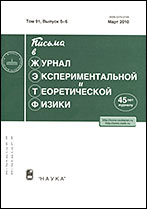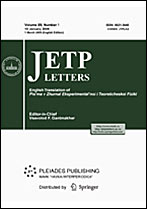|
This article is cited in 8 scientific papers (total in 8 papers)
MISCELLANEOUS
Model of a surface liquid-like layer of ice
I. A. Ryzhkina, M. I. Ryzhkina, V. V. Sinitsyna, A. V. Klyuevb
a Institute of Solid State Physics, Russian Academy of Science, Chernogolovka, Moscow region, Russia
b National Research Lobachevsky State University of Nizhny Novgorod, Nizhny Novgorod, Russia
Abstract:
The previously developed model of an intermediate phase of ice with a liquid system of hydrogen bonds has been applied to describe a quasiliquid surface layer. This approach leads to a two-component model of a quasiliquid ice surface layer. In the outer part of the layer, both the proton and oxygen sublattices are melted, constituting water or the Thomson sublayer. In the inner part of the layer, only the proton sublattice is melted, whereas the oxygen sublattice holds its structure (the liquid state of the system of hydrogen bonds or the Faraday sublayer). The proposed model gives correct-in-magnitude estimates of various physical characteristics of the layer, explains the contradiction between the Faraday and Thomson hypotheses, and is consistent with recent experimental results and numerical studies.
Received: 23.10.2017
Revised: 30.10.2017
Citation:
I. A. Ryzhkin, M. I. Ryzhkin, V. V. Sinitsyn, A. V. Klyuev, “Model of a surface liquid-like layer of ice”, Pis'ma v Zh. Èksper. Teoret. Fiz., 106:11 (2017), 724–728; JETP Letters, 106:11 (2017), 760–764
Linking options:
https://www.mathnet.ru/eng/jetpl5443 https://www.mathnet.ru/eng/jetpl/v106/i11/p724
|


| Statistics & downloads: |
| Abstract page: | 199 | | Full-text PDF : | 94 | | References: | 35 | | First page: | 13 |
|





 Contact us:
Contact us: Terms of Use
Terms of Use
 Registration to the website
Registration to the website Logotypes
Logotypes







 Citation in format
Citation in format 
